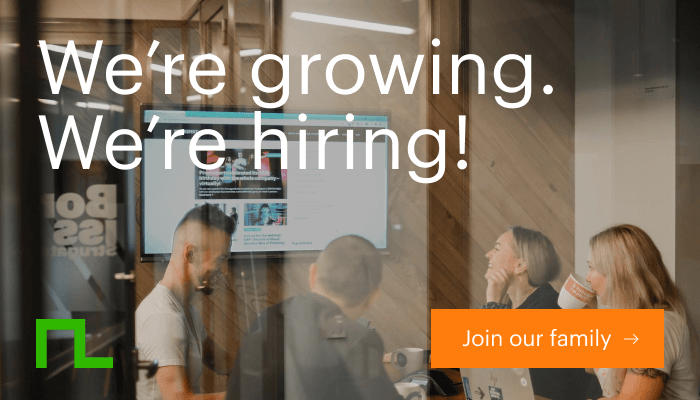Business process digitalization: streamlining workflows for efficiency and new added value
One of the frequent requests from our clients centers around the imperative concept of “business process digitalization”. However, in practical terms, our clients often phrase it more directly: the desire to minimize paperwork and manual processes through the integration of digital tools. In this blog post, I will try to elaborate more about the primary motivations, challenges, and why Proekspert stands out as a reliable partner for such transformative projects.
I will first try to summarize what could be the keywords for takeaways from this blogpost.

The drivers for such kind of digital transformation projects can be summarized as follows:
- Boost work efficiency.
- Digitalize data and make them have a more central role in your business.
- Reveal new business insights from centralized data.
The main challenges you are probably going to face are:
- user reluctancy to adapt to change and new tools/way of working.
- complexity of systems integration when the relevant data are scattered among different owners.
- dependence on vendors, in case of adoption of 3rd-party software.
Now a few more words about each of the above listed points.
Drivers for business process digitalization
Boost work efficiency. The challenge in increasing work efficiency is very much tied to the hours of employee work saved through the automation and digitalization of manual procedures. Frequently, our clients have already conducted some analysis, calculating the time invested in manual processes. This exercise not only brings light on the current costs but also paints a picture of potential gains. By quantifying the time spent on manual procedures, clients gain insights into the cost/benefit dynamics, providing a foundational understanding as they embark on a digital transformation journey. The time saved with digitalization can be spent on more useful tasks.
Digitalize and centralize data. The process of digitalizing and centralizing data often results in an important shift in reporting dynamics as well as time saved. It’s not an unusual scenario where generating a report could require days of collecting information from disparate systems, documents, and Excel files. But with digitalization, this information can be made available within seconds, accessible to all via a web dashboard or any other platform, for instance.
However, the benefits go beyond efficiency gains. The streamlined access to digitalized data opens doors for providing innovative services to clients. This not only enhances client engagement but also elevates the overall attractiveness of your value proposition. A proper digitalization not only optimizes internal processes but also positions your organization to deliver enhanced value to your clients and gives you a key competitive advantage.
Reveal new insights from data. BI tools built on top of collected data help in building a wider understanding of various aspects of the business, enabling better planning and scheduling, and eventually revealing patterns which would otherwise stay hidden behind the high effort needed to get the same information using manual work.
Main challenges
User reluctancy. This has often been the number one concern and challenge in making sure that the digitalization project will be a successful one. As I always like to say, it’s not always so easy to replace the easy-to-use “pencil and paper”. While it is tempting to build a digital tool that is a very close copy of the manual procedure that it is going to replace it (in this way, the end users would have something that is still somehow familiar to them), this is, in many cases, going to fail if we forget to ask the right questions. With the help of Service Design, we can have a more holistic view of the entire process, observe and interview those who will be the main users and the main stakeholders who will benefit from the digitalization process. So that there are less assumptions based on limited data and instead more accurate requirements are put in place, making the new tools efficient and appealing for everybody.
Talking about extremes, it was not so uncommon to hear about stories that seemed to have great potential but failed on the small, yet crucial details. Coming back to the earlier example of replacing the pen and paper, users of an application in the agricultural sector who could not use the newly built mobile application because they were usually wearing thick gloves while performing their work and were thus unable to use the application at all. Instead, they reverted back to the tried and true pencil and paper solution they used originally. Or digital tools that were succeeding only halfway through, because the places they were using the application had poor internet connectivity which had not been considered at all during an early stage of defining the core requirements. And there are many other similar examples of aspects that should be considered when approaching digitalization of procedures and tasks.
And worth mentioning, the reasoning behind user reluctancy could also be “social”: people just might think that new digital tools are threatening their job position. It is a debate that today we see very popular with AI tools for example. It is crucial to educate the end consumer on how these tools will instead elevate the work they do.
Complexity of systems integration. There are various situations where the value of digitalized data would be greatly enhanced if they were integrated with data from other sources and processes. One of the domains where we have seen this the most is factory and production process digitalization. In addition to digitalizing human procedures, we had to study and understand different types of machines and 3rd-party software tools from the most popular providers as well as internal custom-made, decades-old software tools. All just to understand the end-to-end user experience in its complexity. But similar patterns appear from time to time in other domains as well. It is vital to go through the whole flow of using such tools because a half-working solution may end up decreasing efficiency instead of increasing it, eventually resulting in a decrease in user and customer satisfaction.
Dependency on vendors. When opting for third-party software solutions in your digitalization journey, awareness of potential pros and cons is essential, as it helps to more precisely evaluate where custom-developed solutions ultimately cover your current and future needs in comparison off-the-shelf products. While large corporate software platforms often address various needs (as they are often built to cover many domains), it’s important to assess the relevance of the entire feature set to your specific requirements, as well as the opposite: how much the missing features can impact your current and future ambitions. In other words, consider whether the paid license aligns seamlessly with your specific usage patterns, business requirements and technological limitations.
On the other side, relying on well-established, up-to-date and secure software components, including libraries, plugins, and packages used in custom development, is equally vital. This ensures not only immediate functionality but also guarantees long-term support and maintenance, a foundational consideration for a sustainable digitalization strategy.
Why Proekspert
Do you have a topic of digitalization of business processes and manual work on the table and are looking for a partner to help with? Feel free to reach out and book a meeting with us, we will be happy to discuss it further.














